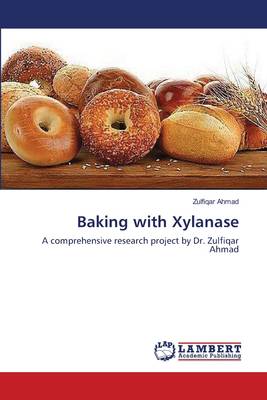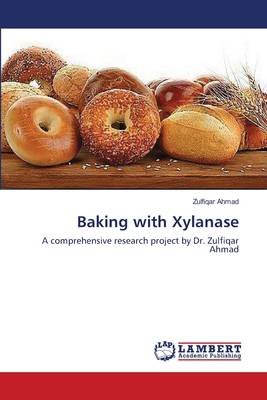
- Afhalen na 1 uur in een winkel met voorraad
- Gratis thuislevering in België vanaf € 30
- Ruim aanbod met 7 miljoen producten
- Afhalen na 1 uur in een winkel met voorraad
- Gratis thuislevering in België vanaf € 30
- Ruim aanbod met 7 miljoen producten
Zoeken
Baking with Xylanase
A comprehensive research project by Dr. Zulfiqar Ahmad
Zulfiqar Ahmad
Paperback | Engels
€ 75,95
+ 151 punten
Omschrijving
The demand for chemical free food products is increasing rapidly over the globe and biotechnology can play a significant role to meet the purpose. The enzymes extracted from microbial sources are being deployed to get bakery items of high quality and safety. Present research was conducted to synthesize xylanase enzyme by Aspergillus niger using local agricultural wastes for its utilization in baking industry. Wheat bran, corn cobs and sugar cane bagasse were used as carbon source employing submerged fermentation. Wheat bran showed maximum xylanase activity followed by corn cob and sugar cane bagasse. As the ultimate goal was to apply xylanase in bakery products i.e. bread, so it was subjected to efficacy studies. It is deduced that values for body growth performance, serological and hematological parameters were within normal ranges showing the safety of enzyme. In order to assess the potential of xylanase in bread making; a comparative study was carried out which concluded that the xylanase addition modified the rheological attributes of dough resulting the increased bread volume. Lastly, sensory evaluation showed marked improvement in organoleptic properties of bread.
Specificaties
Betrokkenen
- Auteur(s):
- Uitgeverij:
Inhoud
- Aantal bladzijden:
- 216
- Taal:
- Engels
Eigenschappen
- Productcode (EAN):
- 9783659379239
- Verschijningsdatum:
- 31/05/2013
- Uitvoering:
- Paperback
- Formaat:
- Trade paperback (VS)
- Afmetingen:
- 152 mm x 229 mm
- Gewicht:
- 322 g

Alleen bij Standaard Boekhandel
+ 151 punten op je klantenkaart van Standaard Boekhandel
Beoordelingen
We publiceren alleen reviews die voldoen aan de voorwaarden voor reviews. Bekijk onze voorwaarden voor reviews.











